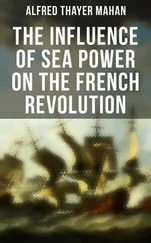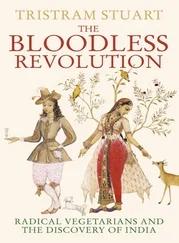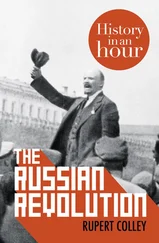Richard Pipes - The Russian Revolution
Здесь есть возможность читать онлайн «Richard Pipes - The Russian Revolution» весь текст электронной книги совершенно бесплатно (целиком полную версию без сокращений). В некоторых случаях можно слушать аудио, скачать через торрент в формате fb2 и присутствует краткое содержание. Жанр: Старинная литература, на английском языке. Описание произведения, (предисловие) а так же отзывы посетителей доступны на портале библиотеки ЛибКат.
- Название:The Russian Revolution
- Автор:
- Жанр:
- Год:неизвестен
- ISBN:нет данных
- Рейтинг книги:3 / 5. Голосов: 1
-
Избранное:Добавить в избранное
- Отзывы:
-
Ваша оценка:
- 60
- 1
- 2
- 3
- 4
- 5
The Russian Revolution: краткое содержание, описание и аннотация
Предлагаем к чтению аннотацию, описание, краткое содержание или предисловие (зависит от того, что написал сам автор книги «The Russian Revolution»). Если вы не нашли необходимую информацию о книге — напишите в комментариях, мы постараемся отыскать её.
The Russian Revolution — читать онлайн бесплатно полную книгу (весь текст) целиком
Ниже представлен текст книги, разбитый по страницам. Система сохранения места последней прочитанной страницы, позволяет с удобством читать онлайн бесплатно книгу «The Russian Revolution», без необходимости каждый раз заново искать на чём Вы остановились. Поставьте закладку, и сможете в любой момент перейти на страницу, на которой закончили чтение.
Интервал:
Закладка:
97. NChS (Berlin-Prague), No. 9 (1925), 111–41.
98. D. Venner, Histoire de l’Armée Rouge (Paris, 1981), 141.
99. Zinoviev in Ezhenedel’nik VChK , No. 6 (October 27,1918), 21; K. Alinin in Cheka (Odessa, 1919), 3. Further on fears of the Cheka in Bolshevik ranks: Alfons Paquet, Im kommunistischen Russland (Jena, 1919), 124–25.
100. Pravda , No. 216 (October 8, 1918), 1.
101. Petrogradskaia Pravda , No. 237/463 (October 29, 1918), 1.
102. Golinkov, Krushenie , I, 232.
103. Ezhenedel’nik VChK , No. 3 (October 6, 1918), 7–8.
104. Vechernye Izvestiia , No. 161 (February 3, 1919).
105. N. Moskovskii in Petrogradskaia Pravda , No. 237/463 (October 29, 1918), 1.
106. N. Zubov, F. E. Dzerzhinskii: Biografiia , 3rd ed. (Moscow, 1971), 80–81.
107. Cited by Krylenko in Izvestiia , No. 25/577 (February 4, 1919), 1.
108. E.g., G. Moroz in VS , No. 11 (1919), 4–6, and Zinoviev in Ezhenedel’nik VChK , No. 6 (October 27, 1918), 10.
109. Leggett, Cheka , 69.
110. Kievskie Izvestiia , No. 44 (May 17, 1919).
111. Dekrety , III, 458–59.
112. Golinkov, Krushenie , I, 232.
113. Izvestiia , No. 17/569 (January 25, 1919), 3.
114. Vechernye Izvestiia , No. 159 (January 31,1919); cf. Krylenko in Izvestiia , No. 25/577 (February 4, 1919), 1.
115. Lenin i VChK , 144–45.
116. E.g., N. Norov in Vechernye Izvestiia , No. 172 (February 15, 1919).
117. N. V. Krylenko, Sud i pravo v SSSR , cited in Melgunov Archive, Hoover Institution, Box 4, Folder 25.
118. Leggett, Cheka , 216.
119. IA , No. 1 (1958), 8–9.
120. I. Polikarenko, ed., Osoboe zadanie (Moscow, 1977), illustration between pp. 296 and 297.
121. Leggett, Cheka , 208–9, 238.
122. Liberman, Building , 14–15.
123. Leggett, Cheka , 93.
124. Ibid. , 210.
125. Ibid. , 212–13.
126. L. Trotskii in Izvestiia , No. 171 (August 11, 1918), 1.
127. IA , No. 1 (1958), 10.
128. Dekrety , IV, 400–2.
129. Ibid . V, 69–70.
130. Ibid. , 174–81.
131. D. J. Dallin and B. I. Nicolaevsky, Forced Labor in Soviet Russia (New Haven, Conn., 1947), 299.
132. Dekrety , V, 511–12.
133. Kaminski, Konzentrationslager , 87.
134. A. Solzhenitsyn cited in Kaminski, Konzentrationslager , 87. See further James Bunyan, The Origin of Forced Labor in the Soviet State: 1917–1921 (Baltimore, 1967).
135. Cheka i materialy , 242–47.
136. Kaminski, Konzentrationslager , 82–83.
137. Boris Nikolaevskii in SV , No. 8–9/732–733 (1959), 167–72; G. H. Leggett in Survey , No. 2/107 (1979), 193–99.
138. Leggett, Cheka , 464; M. la. Latsis, Dva goda bor’by na vnutrennem fronte (Moscow, 1920), 75.
139. Otchët Tsentral’nogo Upravleniia Chrezvychainykh Komissii pri Sovnarkome Ukrainy za 1929 138. god (Kharkov, 1921), in W. H. Chamberlin, The Russian Revolution, 1917–21 , II (New York, 1935), 75.
140. Lower figure in K. Alinin, Tche-Ka (London, n.d.), 65, higher in Leggett, Cheka , 464.
141. Chamberlin, Revolution , II, 75; Leggett, Cheka , 359.
142. I. Steinberg, Gewalt und Terror in der Revolution (Berlin, 1974), 16.
143. Ibid. , 138–39.
144. The Bullitt Mission to Russia (New York, 1919), 115.
145. Pierre Pascal, En Russie Rouge (Petrograd, 1920), 6.
146. International Committee for Political Prisoners, Letters from Russian Prisons (New York, 1925), 2, 15, 13.
Afterword
1.
A. Ksiunin in
VO
, No. 55 (June 22, 1918), 1.
ONE HUNDRED WORKS ON THE RUSSIAN REVOLUTION
The following selection of literature on the Russian Revolution is admittedly subjective: I have chosen books from which I have learned the most. Unfortunately, although the serious literature in Western languages increases each year, the bulk of the material is still in Russian. Additional references will be found in the footnotes and endnotes.
Part I
The best general surveys of the final years of the monarchy are by Bernard Pares, who was both an eyewitness and a historian: Russia and Reform (London, 1907) and The Fall of the Russian Monarchy (London, 1929). There exists a sympathetic history of Nicholas II by S. S. Oldenburg, Tsarstvovanie Imperatora Nikolaia II [ The Reign of Emperor Nicholas II ], 2 vols. (Belgrade-Munich, 1939–49). It has been translated as Last Tsar: Nicholas II, His Reign and His Russia , 4 vols. (Gulf Breeze, Fla., 1975–78). Anatole Leroy-Beaulieu’s three-volume The Empire of the Tsars and the Russians (New York-London, 1898) is a comprehensive survey of Imperial Russia in the 1880s. The reader may also wish to consult my Russia under the Old Regime (London-New York, 1974), which interprets the course of Russia’s political and social history.
There exists a unique source of testimonies by high officials on the last years of the old regime taken by a commission of the Provisional Government and published under the editorship of P. E. Shcheglovitov: Padenie tsarskogo rezhima [ The Fall of the Tsarist Regime ], 7 vols. (Leningrad, 1924–27). Selections from it have been published in French: La Chute du Régime Tsariste: Interrogatoires (Paris, 1927). A six-volume “chronicle” of the year 1917 edited by N. Avdeev et al., Revoliutsiia 1917: khronika sobytii [ The Revolution of 1917: A Chronicle of Events ] (Moscow, 1923–30), delivers much more than its title promises, for it contains a wealth of information from rare and unpublished contemporary sources.
Of the memoir literature on late Imperial Russia, the most outstanding are the recollections of Sergei Witte, Vospominaniia [ Memoirs ], 3 vols. (Moscow, 1960). The one-volume English condensation by Abraham Yarmolinsky, Memoirs of Count Witte (London-Garden City, N.Y., 1921), is a pale shadow of the original. Very informative on the mentality of the high Imperial bureaucracy are the recollections of State Secretary S. E. Kryzhanovskii, Vospominaniia [ Memoirs ] (Berlin, [1938]). The recollections of the liberal leader Paul Miliukov appeared posthumously: Vospominaniia [ Memoirs ] (New York, 1955) (in English: Political Memoirs, 1905–1917 , Ann Arbor, Mich., 1967). Dmitrii Shipov, a leading liberal-conservative, wrote Vospominaniia i dumy o perezhitom [ Recollections and Reflections on the Past ] (Moscow, 1918).
The best study of the late Imperial bureaucracy unfortunately remains unpublished: Theodore Taranovsky, The Politics of Counter-Reform: Autocracy and Bureaucracy in the Reign of Alexander III 1881–1894 , Ph.D. Dissertation, 1976, Harvard University.
On the peasants, outstanding are the personal observations of A. N. Engelgardt, Iz derevni [ From the Village ] (Moscow, 1987), and Stepniak [S. M. Kravchinskii], The Russian Peasantry (New York, 1888). Theodore Shanin’s The Awkward Class (Oxford, 1972) is a study of Russian peasants under tsarist and Communist rule.
On the phenomenon of the intelligentsia, there is an informative collection of essays edited by George B. de Huszar, The Intellectuals (London and Glencoe, Ill., 1960). There exists no satisfactory history of the Russian intelligentsia in the twentieth century. On the Socialists-Revolutionaries, there is Manfred Hildermeier’s Die Sozialrevolutionäre Partei Russlands [ The Russian Socialist-Revolutionary Party ] (Köln-Vienna, 1978). On the Social-Democrats, the reader may consult Leonard Schapiro’s The Communist Party of the Soviet Union (New York, 1960) and John L. H. Keep’s The Rise of Social Democracy in Russia (Oxford, 1963). On the early liberals, Shmuel Galai has written The Liberation Movement in Russia, 1900–1905 (Cambridge, 1973). The four-volume Obshchestvennoe dvizhenie v Rossii v nachale XX-go veka [ Public Currents in Russia at the Beginning of the Twentieth Century ] (St. Petersburg, 1910–14), edited by Martov and other Mensheviks, provides an intelligent if partisan survey. Revolutionary terrorism is recounted in A. Spiridovich’s Histoire du Terrorisme Russe, 1886–1917 (Paris, 1930). My two-volume biography, Struve: Liberal on the Left (1870–1905 ) (Cambridge, Mass., 1970) and Struve: Liberal on the Right (1905–1944 ) (Cambridge, Mass., 1980), deals with an outstanding Russian intellectual of the age who evolved from Marxism to liberalism and ended up as a monarchist.
Читать дальшеИнтервал:
Закладка:
Похожие книги на «The Russian Revolution»
Представляем Вашему вниманию похожие книги на «The Russian Revolution» списком для выбора. Мы отобрали схожую по названию и смыслу литературу в надежде предоставить читателям больше вариантов отыскать новые, интересные, ещё непрочитанные произведения.
Обсуждение, отзывы о книге «The Russian Revolution» и просто собственные мнения читателей. Оставьте ваши комментарии, напишите, что Вы думаете о произведении, его смысле или главных героях. Укажите что конкретно понравилось, а что нет, и почему Вы так считаете.












